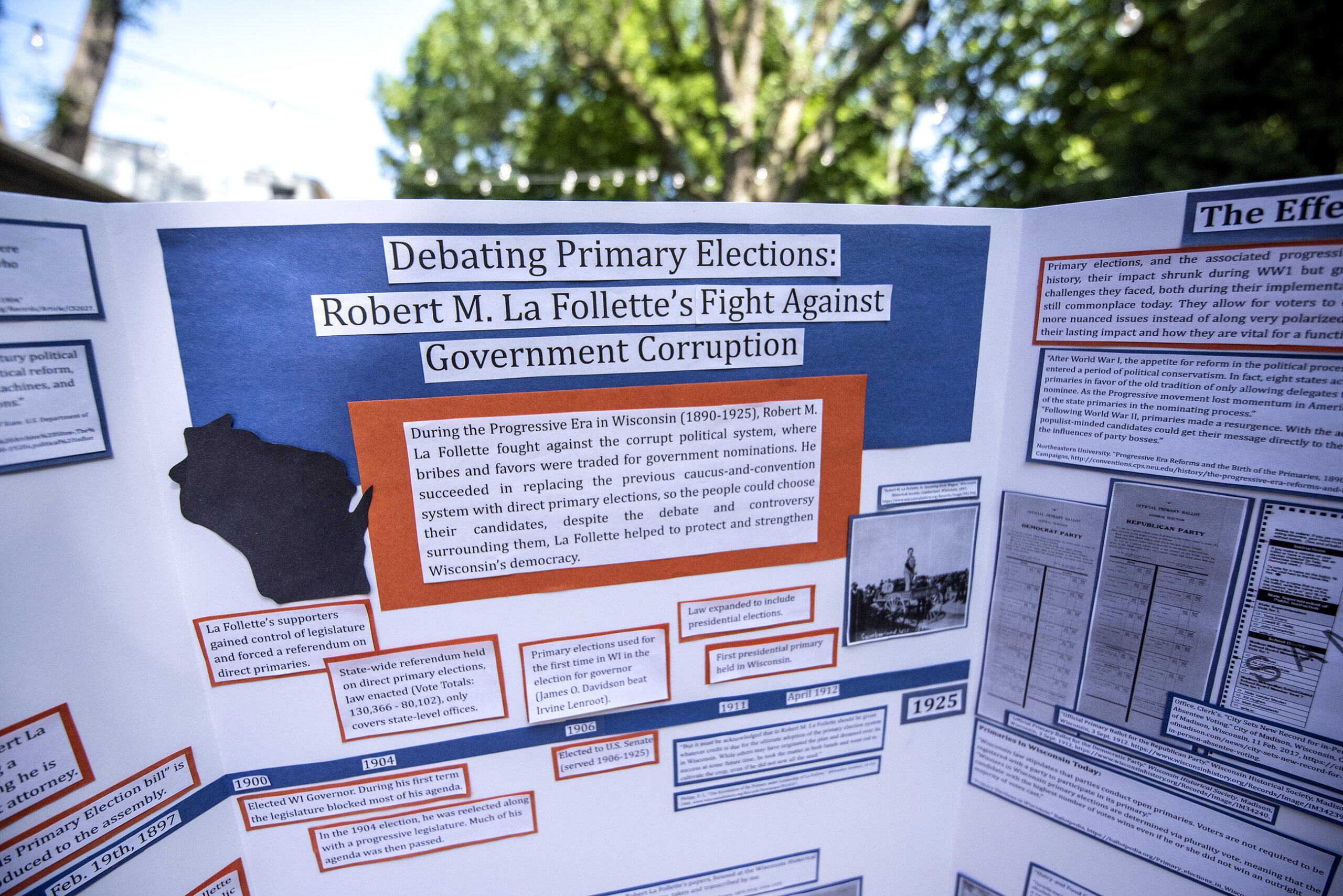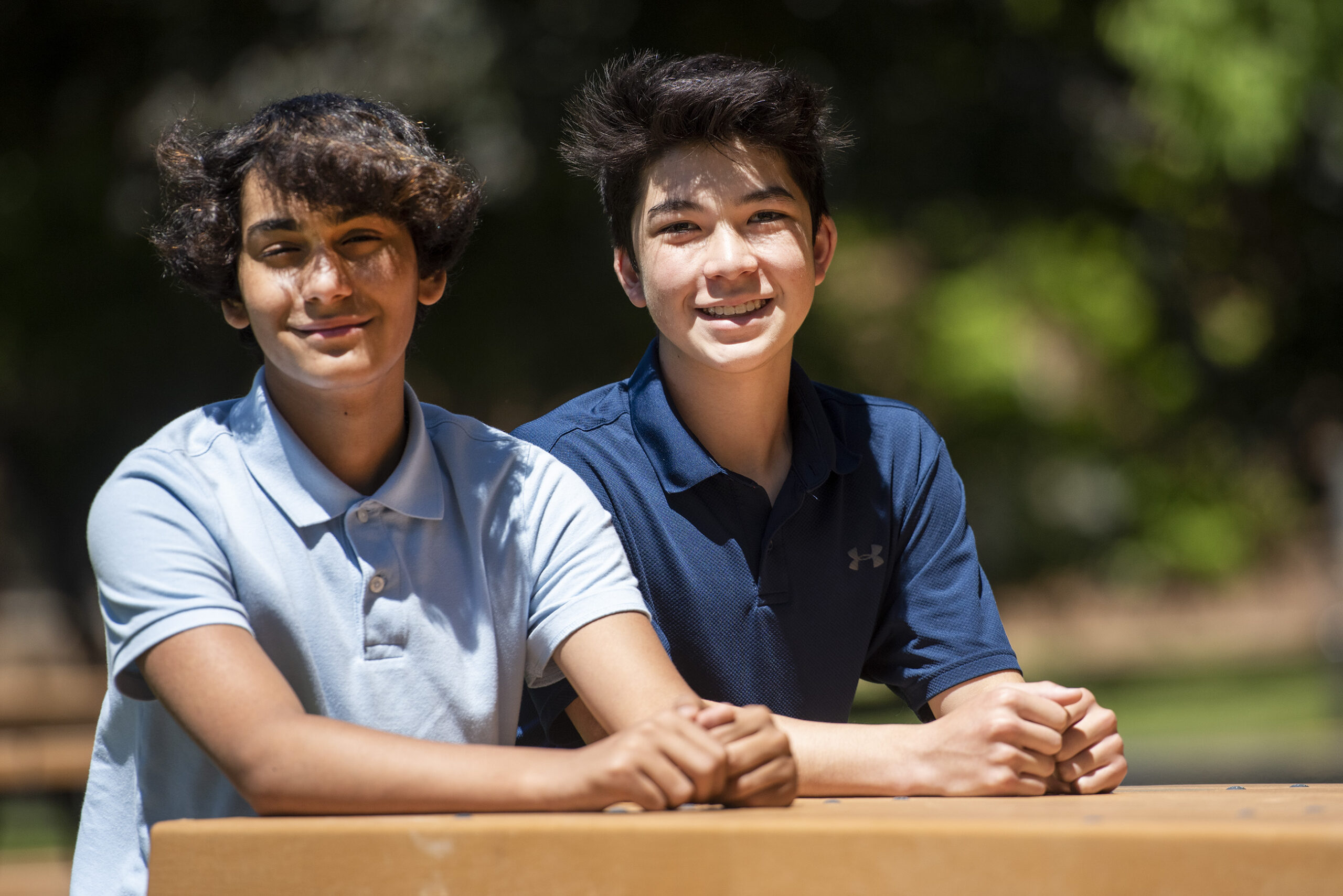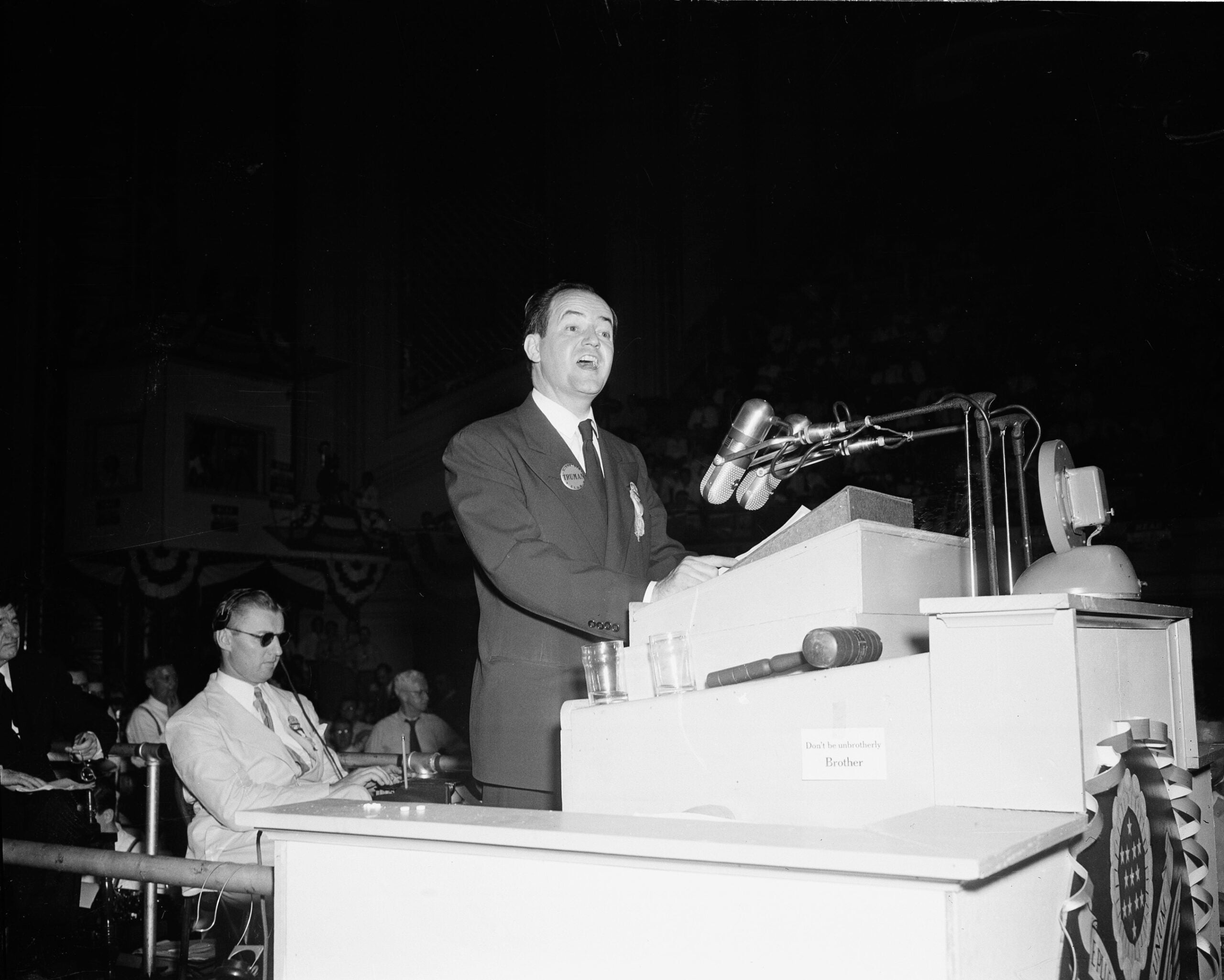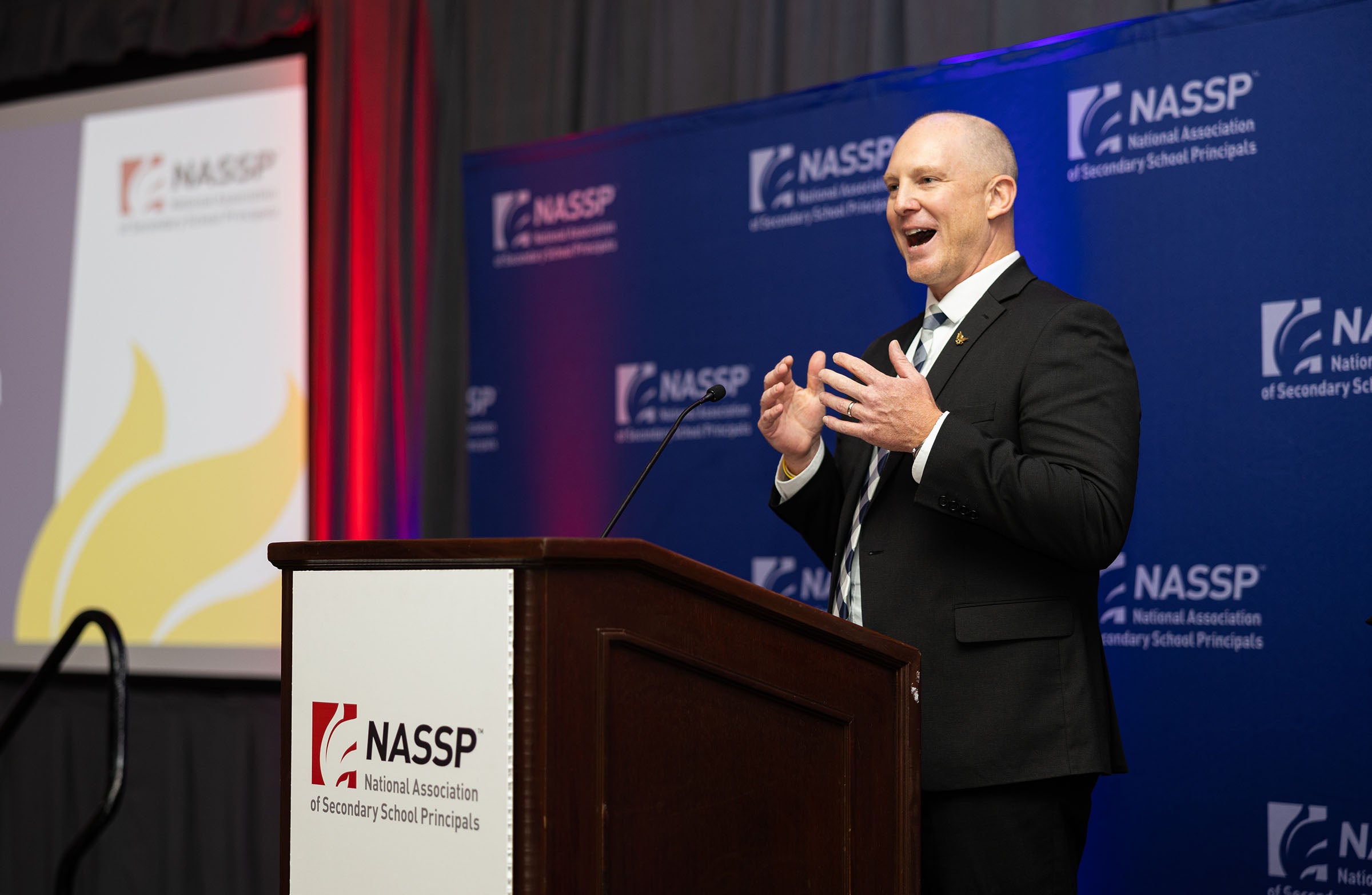Three Wisconsin students were among a competitive group from around the country whose history projects were displayed at Smithsonian museums as part of a National History Day competition that brings student work into national institutions.
For her tri-fold poster board about Wisconsin politician Robert La Follette and the creation of primary elections, Anna Siebers, a freshman at Madison West High School, delved into Wisconsin’s historical archives.
“I think it was really interesting learning that Wisconsin was such a leader in something,” she said. “I feel like Wisconsin isn’t known that much as a big influence on the nation, but Wisconsin was kind of a leader at the time of a lot of the Progressive movements.”
News with a little more humanity
WPR’s “Wisconsin Today” newsletter keeps you connected to the state you love without feeling overwhelmed. No paywall. No agenda. No corporate filter.
La Follette helped institute sweeping political reforms during his stints as Wisconsin governor and as a U.S. senator, including the shift from party candidates selected by party leaders to the modern primary election system.
She picked La Follette and the primaries for her first-semester project while paging through the Wisconsin Historical Society’s database, and then got more excited about him, and the Progressive Era he helped define, as she learned more.
“It’s crazy finding out that there’s a lot of stuff in our elections, and the world today, that we don’t think there was a time without it,” she said. “I feel like the presidential primary, that’s such an important part every four years of the elections. To think there was a time that that doesn’t exist, that there weren’t any primaries — just: ‘Here’s the candidates.’”

University School of Milwaukee eighth-graders Carson Tausher and Veer Gokhale knew they wanted to focus on Milwaukee’s racial history for their project. From there, they honed in on racially restrictive covenants and redlining. The covenants were agreements to not sell or rent property to people based on their race or other affiliation — Black and Jewish people, for example, were the most common targets. Redlining referred to the Federal Housing Administration’s practice of refusing to insure mortgages in Black neighborhoods.
“As people of color who live in Milwaukee, which is one of the most segregated cities in the United States, we believed that this was our way of sharing our knowledge on this topic,” said Veer. “We also wanted to provide a perspective on whether fair housing has progressed or regressed — because it’s progressed in some ways, but it’s also regressed in some ways.”
Inspired by a film class Veer had taken the year before, the boys decided to make a documentary. They interviewed several people, including America’s Black Holocaust Museum oral historian Reggie Jackson, about Milwaukee’s history with the racist practices.
“I don’t think it really changed how I look (at Milwaukee) … but more as an eye-opening opportunity for me,” said Carson. “Just looking at the city of Milwaukee — and any city that you go to — it just kind of changes how you think about, like, ‘Oh, that person could have been racially segregated against while buying a house, but they didn’t know that.’ … It’s just those kinds of things that stick with me.”

Anna said her interest before the project was in math and science, and while that’s still true, she said her project on La Follette helped her engage with history in a more vivid way — to the point where she’s hoping to volunteer at the historical archives this summer.
“It’s been such a cool experience,” she said. “Really learning so much about it shows you how much you don’t know about everything else — it seems like there was always more I could learn about this, and it’s such a small thing, that there’s just a ton of Wisconsin’s history but also the history of the world.”
Carson and Veer visited Smithsonian museums, including the National Museum of African American History and Culture where their documentary was on view, during an eighth grade trip, and said it’s exciting to know their work will be in the same place they toured.
“After all the work we put into it, seeing that it’s actually doing something, and even seeing that it made it into the Smithsonian was really, it’s just crazy,” said Carson. “Our school project was actually starting to make an impact in D.C., like the main place that people go to in the U.S.”
Veer said he hopes it will empower other teenagers to get involved.
“I feel like when people see our documentary, especially people around our age, they may be inspired by it, because they may feel like they can make an impact too,” said Veer. “The goal of our documentary is to inspire others to try and fight for fair housing.”
Wisconsin Public Radio, © Copyright 2025, Board of Regents of the University of Wisconsin System and Wisconsin Educational Communications Board.




